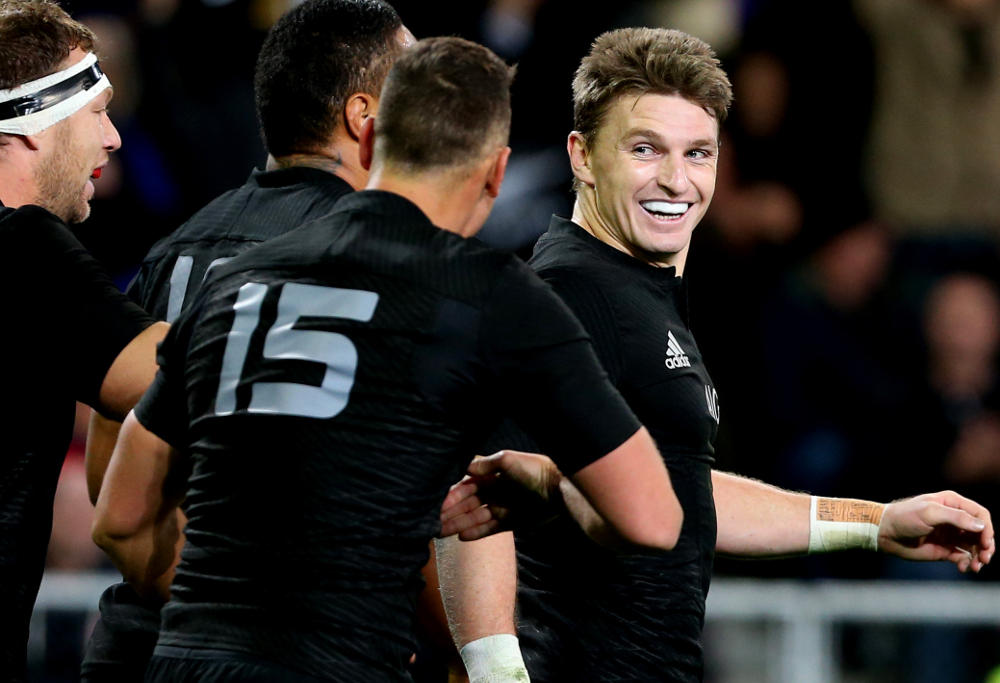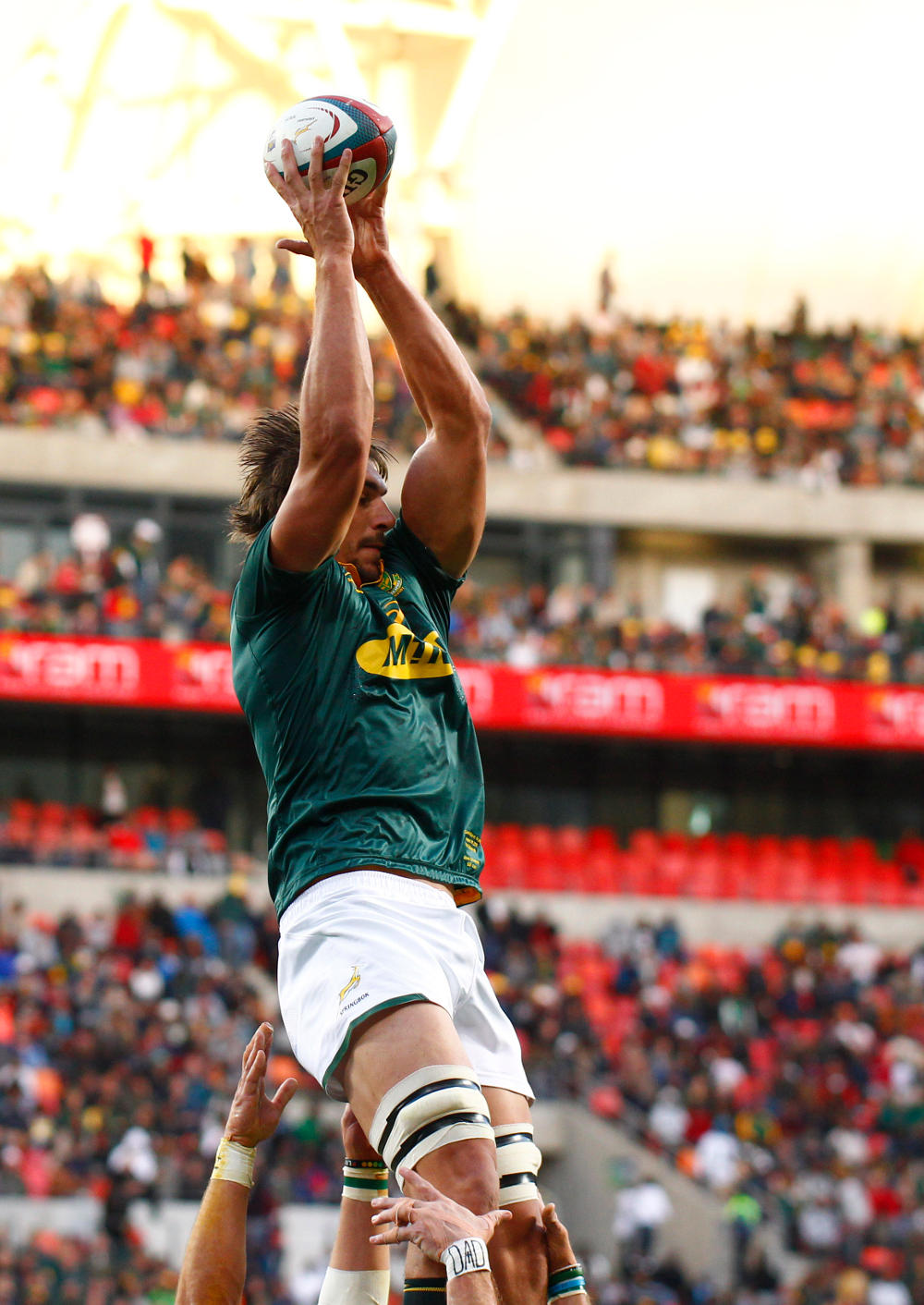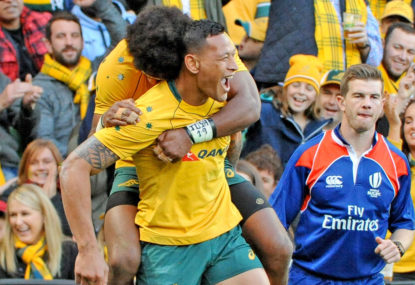Like my first car, a tank-like blue Humber 80, Saturday night’s Canberra Test match took a long time to warm up, and even after it did, isolated spurts of smooth passage were punctuated by misfires and bunny hops along the way.
Sure enough, the Wallabies finished the Pumas off clinically, and the final score of 45-20 accurately reflected the difference between the sides over 80 minutes. But whatever the positives, there remained the inescapable feeling that this was yet another missed opportunity for the Wallabies to win the hearts of fans.
Three weeks ago in Dunedin, the Wallabies fell in the final two minutes to the All Blacks. Despite consigning the Bledisloe Cup to New Zealand for an astonishing 15th successive year, this match allowed fans to, at least momentarily, forget the things that irritate and upset them about Australian rugby – questionable selection, coaching histrionics, entrenched parochialism, the ARU and so on.
The reason for that was because the Wallabies, for 80 minutes, provided them with a good dollop of what has been missing for too long – inspiration.
To play inspired and inspiring rugby is not a simple matter of just wanting to do so; if it was that easy everyone would be doing it. Michael Cheika’s plaintive cry after half-time that his team had failed to register that they were in a Test match implied for some that such matters can be easily remedied with a rev-up, whereas the reality is that attitude is only one piece of a complex puzzle.
The reason flanker Ned Hanigan fails to inspire is not because he lacks heart or won’t put his body on the line for his country, but because, at this stage of his career, he lacks the technique, skill, experience and strength to impose himself like a true international No. 6 must do, and as a result, deliver outcomes that excite people.
In that respect, Hanigan is a metaphor for a side that is trying hard to get better, that is intermittently capable of raising eyebrows, but is hamstrung by chronic lack of depth in key positions, set piece weakness and collective skill deficiencies which forces compromise to defensive patterns and game plans.
These are not failings that can be turned around overnight.

(Photo by Mark Kolbe/Getty Images)
What inspires rugby fans are those ‘wow moments’ that invariably exist outside of the pre-determined team patterns. These include a player taking a game by the scruff of the neck or putting on a moment of audacious skill (Vaea Fifita versus Argentina) or herculean effort (Michael Hooper chasing down Jan Serfontein last week), or a thrilling try (Sean O’Brien for the Lions), or a whole team galvanising and lifting under adversity (a 13-man Wallabies defending against Wales in the 2015 World Cup).
Australian rugby won’t gain traction off wins like this Canberra one: listless bumbling and uncertainty in the first half, before overcoming an Argentine opposition notorious for second half fade-outs who, despite the bravery of their captain Agustin Creevy, inevitably ran out of ideas. The June Test match against Italy was a similar example.
A great late bust by Sean McMahon and a nice inside ball to Nick Phipps is in itself insufficient ‘wow factor’ to justify hefty ticket prices or make the many Canberrans who elected to stay at home regret their decision.
Nor is play like the two best pieces of rugby from the match enough – Kurtley Beale and Rob Simmons respectively making arrow-straight incursions that created space on the edge for both of Israel Folau’s tries – if the 40 minutes in between fails to engage.
If that sounds harsh, it is not meant to demean either the Pumas or the Wallabies – winning Test matches isn’t easy – but rather to reiterate that if the Wallabies are in the entertainment business then they must offer consistent and reliable entertainment value.
By contrast, New Zealand fans are almost always assured of value for money from their side – win or lose – because there is always something happening or about to happen. No better was this illustrated than in the opening try against South Africa scored by the outstanding Rieko Ioane, with Aaron Smith lauded for his vision and perfectly executed left-foot kick, but where the key difference to the Wallabies was one of intent.
Smith not waiting around for a team meeting like the Wallabies would have held, but instinctively nailing the responsibility to make something happen.
A week ago it was Fifita who captured the imagination with his stunning running try. This week Liam Squire reclaimed the No.6 jersey and looked to be in imperious form before receiving a head knock, which then allowed Scott Barrett to be tested at blindside and pass with flying colours.
Where all of this leaves Jerome Kaino is of immense interest. One feels that he still has much to offer, but the thundering of hooves from the youngsters must be deafening.
This was one of those nights where the All Blacks had winners all over the park. Beauden Barrett relished the opportunity to play with freedom, Sam Cane the opportunity to play without Jaco Kriel in opposition, and Ryan Crotty the opportunity to get through a match without hurting himself.

(AAP Image/SNPA, Dianne Manson)
The final try – which matched the All Blacks’ score of 57 last season – was great reward for replacement hooker Codie Taylor, who is becoming something of a specialist against South Africa.
On the downside – and there were very few negatives for the All Blacks – prop Kane Hames proved the old adage that there is an inverse relationship between the level of cockiness at a pre-match press conference and performance; his early replacement a decisive win on points to journalist Marc Hinton.
Despite coach Allister Coetzee’s gracious optimism post-match, it was all downside for the Springboks – a timely reality check that the woes of 2016 cannot simply be washed away through dispatching a French side of questionable pedigree or because you want to believe that things are better.
Like Australia, there are serious questions of depth in key positions (eg halfback, fullback), selection (flyhalf, No.8) and one individual patently not of international standard. Raymond Rhule scored some spectacular tries in Super Rugby but any astute observer knew long ago that he had no propensity for the tackle and that a good side would be able to expose this.
The sight of South Africa repeatedly kicking off deep to Squire, and Rhule rushing up to do anything other than tackle him was both bewildering and comical. Rhule finished the match with a total of nine missed tackles on his own. If he ever makes another Test appearance it will be proof that the problems of South African rugby run far deeper than what even the most pessimistic rugby fans might fear.
While Rhule’s turnstile antics were entirely predictable, what was a shock was the disintegration of the Springbok set piece – particularly the lineout, which has been a reliable banker over many years. Don’t forget that this was a dry night with little wind; no excuse for players as accomplished as Malcolm Marx, Eben Etzebeth and Franco Mostert to create the impression that they’d only met for the first time during the national anthems.

(MICHAEL SHEEHAN/AFP/Getty Images)
In the end, even the Albany streaker showed more fight than the Springboks, and while they will inevitably re-group and relish their return home, this result will be such a massive blow to their confidence and self-esteem that it provides a great opportunity for the Wallabies in a fortnight’s time.
It is time for Cheika’s team to do something special. A win in Mendoza against the Pumajaguares will be no more or less than what is expected. An away win against the Springboks, however, is something else. Particularly if it is achieved through play that is daring or heroic; or preferably both.
With the ARU and Andrew Forrest having broken bread and co-operating over Forrest’s proposed IPRC, there are encouraging, if tentative, signs that there is a pathway out of the administrative funk that has dogged Australian rugby’s recent history.
Caution needs to be expressed in that there are unrealistic expectations in some quarters that Forrest’s competition is a potential life-saver for both domestic and regional rugby. It is entirely possible that it will be neither.
If the SANZAAR experience should have taught Australian rugby anything, it is that a strong domestic structure, entirely separate from any regional competition, is essential, and that there is no magic bullet to be found in solving two separate puzzles with one move.
Whatever happens off the field, what will win back the hearts of Australian rugby fans is the performance of the Wallabies. Whatever inspiration the team found in Dunedin needs to be re-captured and projected to fans, who are desperate to fall in behind a team that plays not only winning rugby, but rugby that inspires them.
A good place for them to start would be a tape of the Albany Test match. Not to identify Springbok weaknesses, or marvel at the All Black’s ruthlessness, but to draw inspiration from the performance of referee Nigel Owens.
Owens’ most recent outing in Dunedin was, by his standards, curiously indecisive, but this performance was as good as any I’ve seen from any referee. Right on top of his game, accurate, relaxed, confident but not arrogant, getting the basics right while adding his own flair and personality, fully understanding how his role was to enhance the experience for both players and fans.
Plenty in there, one would think, for the Wallabies to learn from.
































































































